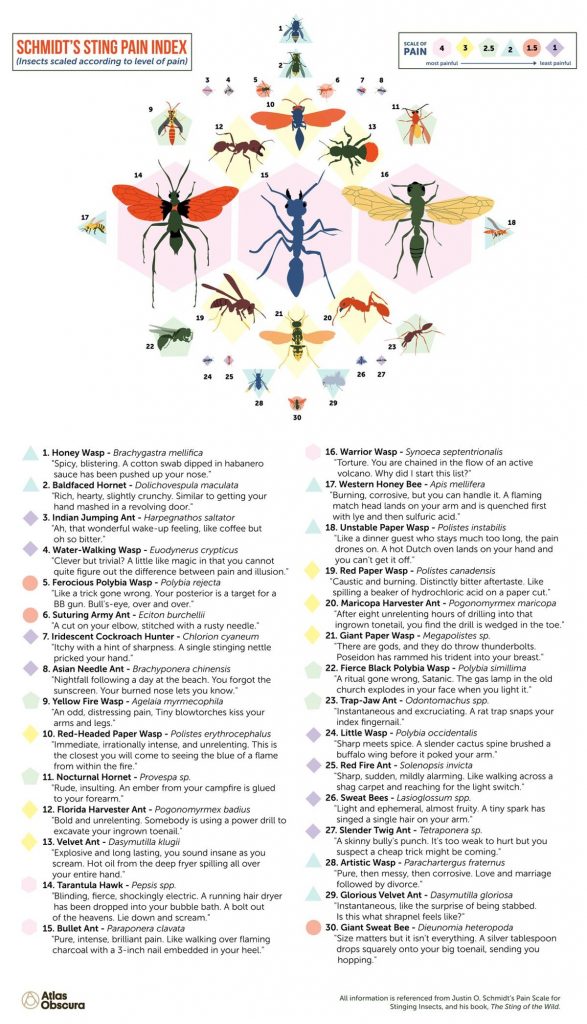Ranking the Pain of Stinging Insects, From ‘Spicy’ to ‘Shockingly Electric’
Scroll down to see a full-scale pain index, with Justin Schmidt’s own poetic descriptions. MICHELLE ENEMARK
Trekking along a mountain in Guanacaste Province, Costa Rica, entomologist Justin Schmidt came across a nest of the tropical wasp species Polybia simillima, better known as the fierce black polybia wasp. The agile, buzzing insect has a reputation for having a painful sting. But Schmidt casted fear aside and approached the nest buried deep inside a dark, densely prickly shrub. He was using a pair of clippers to remove branches, when the angry wasps exploded out at him like flying shards of glass, greeting him with sharp stings.
“A ritual gone wrong, satanic. The gas lamp in the old church explodes in your face when you light it,” Schmidt later wrote about his battle with the fierce black polybia wasp.
This description is one of 78 entries of ant, bee, and wasp stings in his Pain Scale for Stinging Insects, widely referred to as the Schmidt Sting Pain Index. Schmidt, who died in February 2023* was a biologist at Southwestern Biological Institute and researcher in the entomology department at the University of Arizona, and willingly offered his arm to different stinging insects of the order Hymenoptera to create the index featured in his 2016 book The Sting of the Wild. The index ranks stinging pain on a scale of 1 (red fire ant) to 4 (warrior wasp) and recounts Schmidt’s face-off with each insect with a poetic, and sometimes humorous, description. We have depicted a selection of insects included in Schmidt’s Sting Pain Index above, scaling the insects by how agonizing their stings are.
